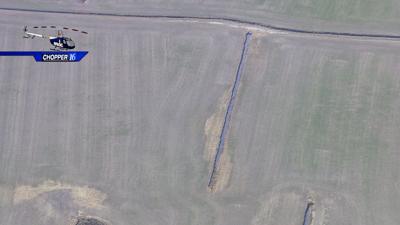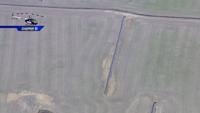MARION STATION, MD — Salt patches, a result of rising sea level, are taking over thousands of acres of farmland and crops across Delmarva. In a study, researchers and scientists say it is decreasing crop yields and hurting farmers financially.
Randy George, a longtime landowner in Somerset County along Gales Creek, has witnessed a gradual shift in the landscape that threatens the livelihoods of farmers in the region. He says an encroachment of saltwater is slowly rendering the land unsuitable for traditional farming.
"The water is gradually creeping in," says George. "I can see it in certain places. It comes in and creeps in, making a new creek or a new entry."
High tides and storms inundate the area with saltwater, leaving behind the salt patches. Jarrod Miller, from the University of Delaware, sheds light on the broader implications of the salinity issue.
"From Dorchester, Somerset, and then up here in Sussex County," says Miller. "There's different salinity issues. Even toward Kent Island, I've gotten calls about salt coming up onto land, so it's up and down the shore."
In response to the growing problem, Miller suggests a few potential remedies. Installing tide gates on ditches can help drain water off the land and prevent further intrusion. Additionally, farmers have turned to spreading calcium sulfate, known as gypsum, to assist the rain in washing the salt away. George affirms that farmers on his land are actively exploring both options, but he remains deeply concerned about the long-term implications for their future.
"Economically, it has an impact," says George. "For me, it's a nuisance, but I'm also worried about the house. I'm not certain that, in a hundred years from now, this will be habitable."
Miller says it is best that farmers be proactive in trying to keep salt off their land. He encourages them to have a plan where the water can drain land or build buffers with wetlands to protect their property.




